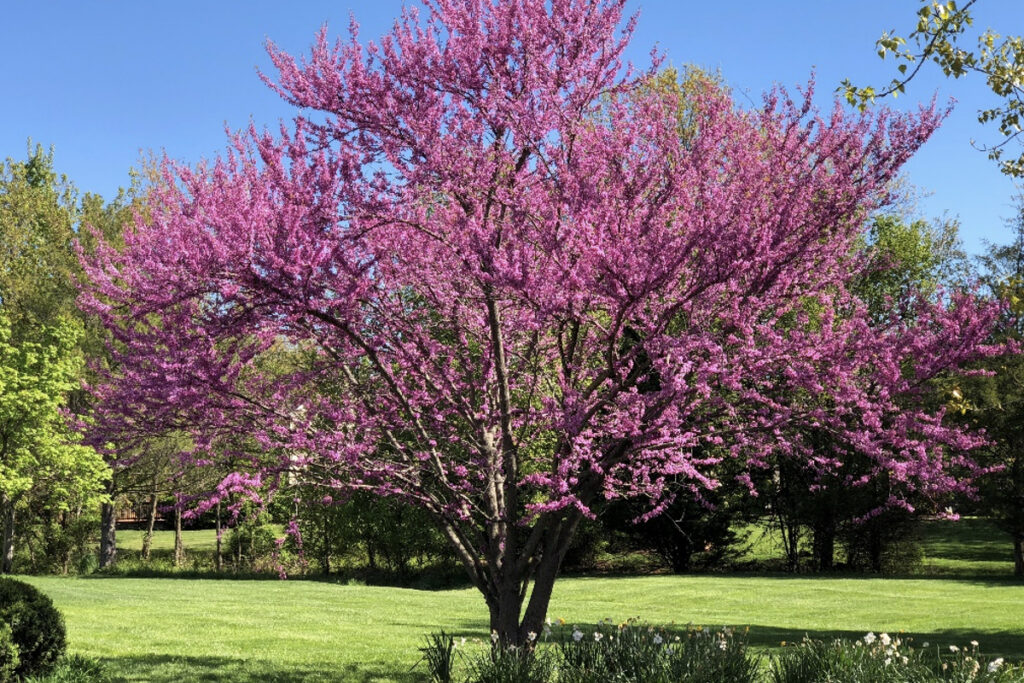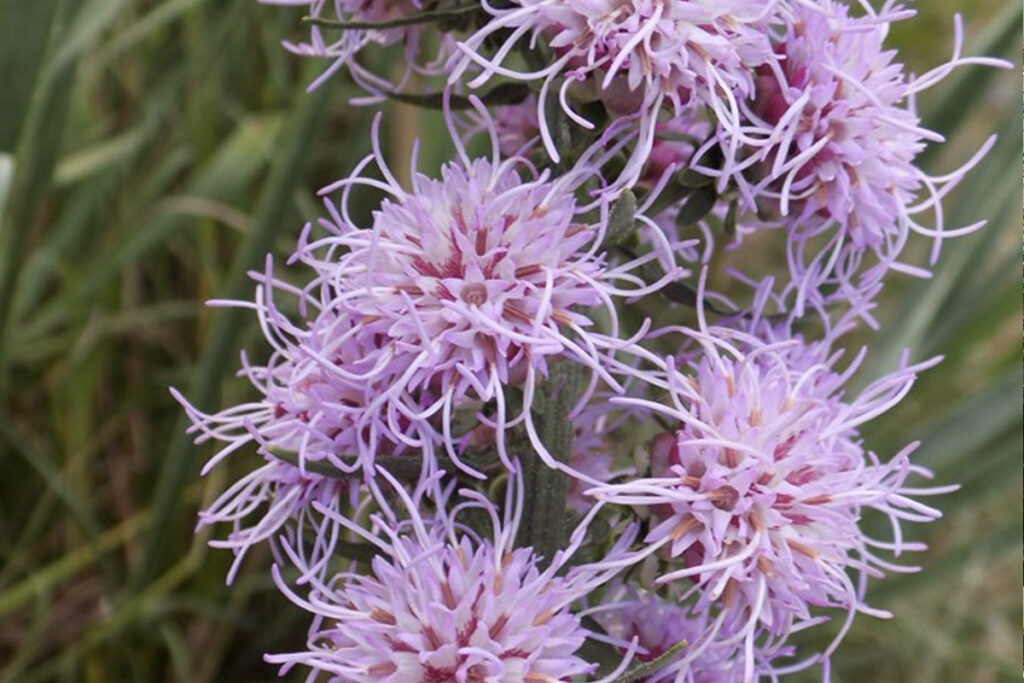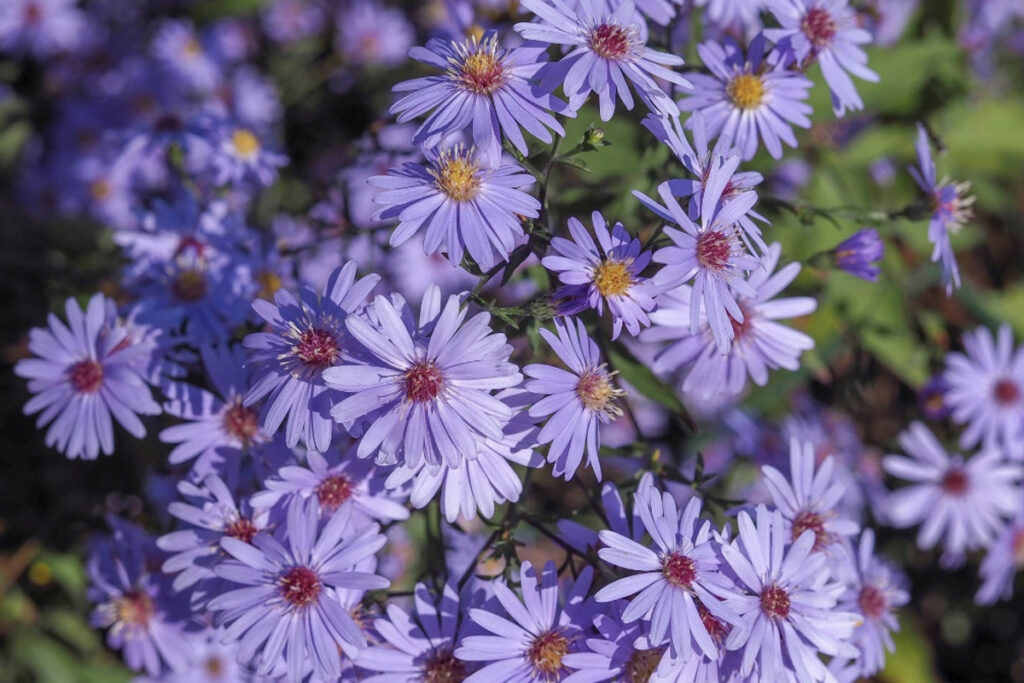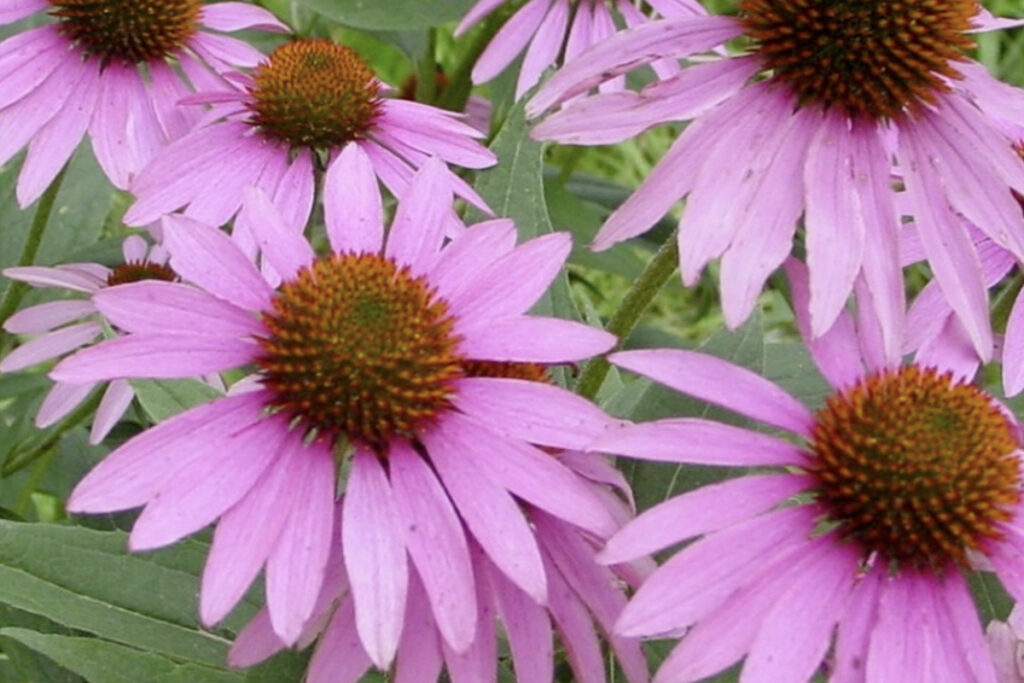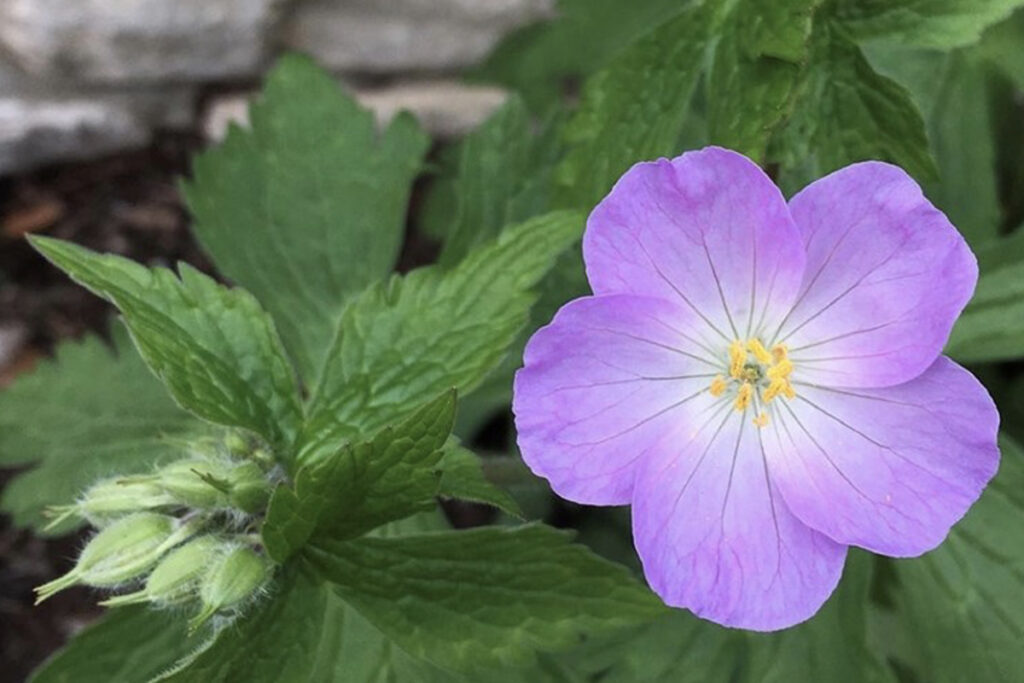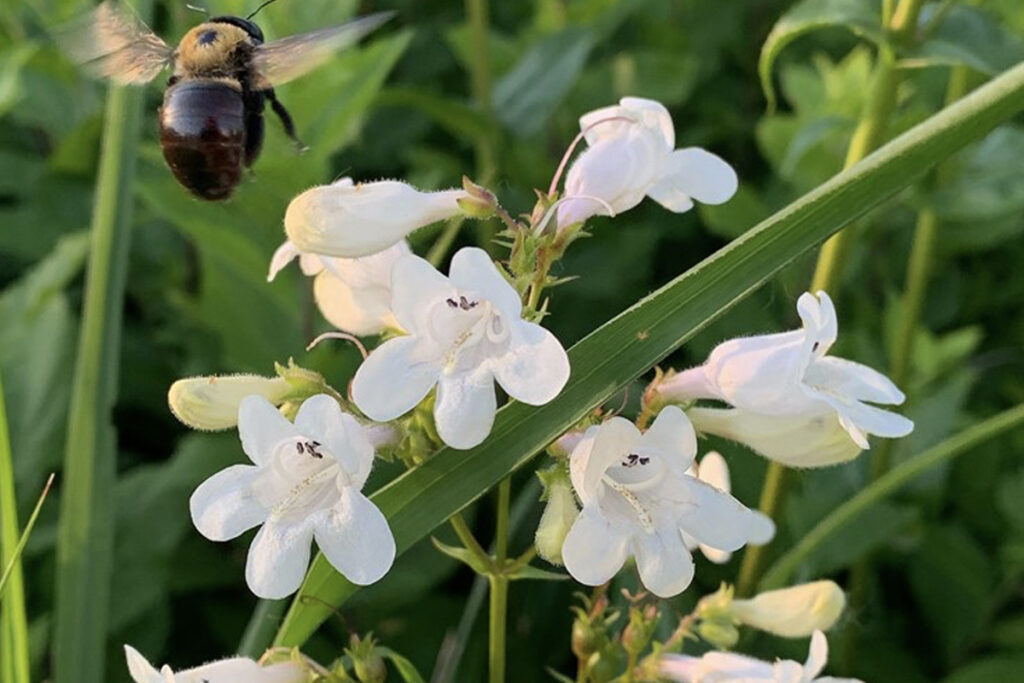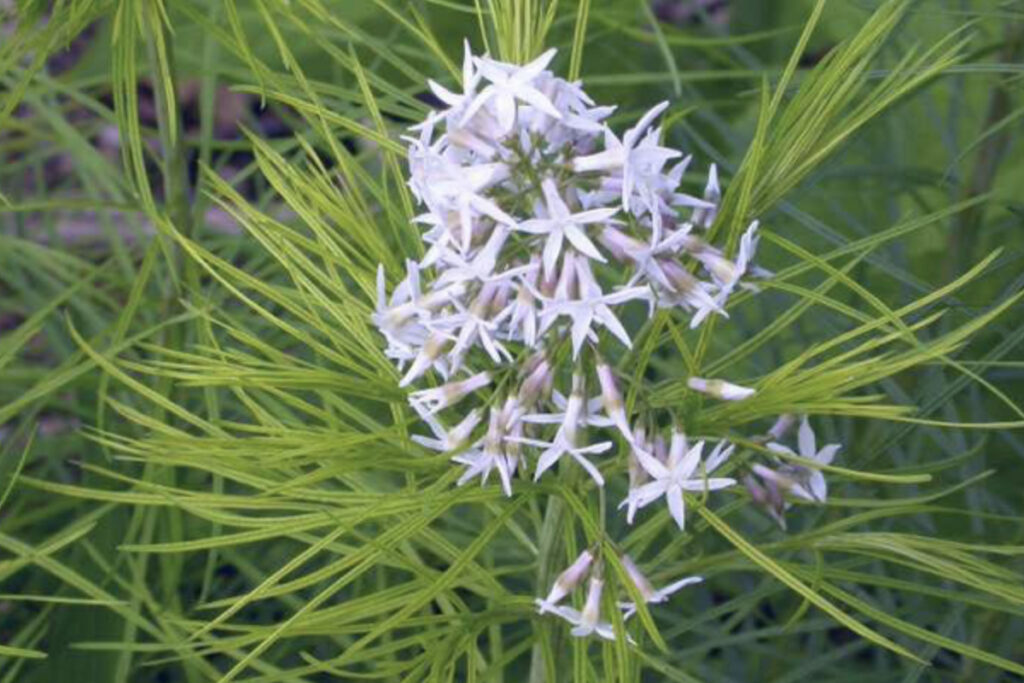Native Plants
Leadership Dublin
The Leadership Dublin Class of 2023 created a Native Planting sight at the City Service Center for their community project. These plants provide a variety of benefits to the ecosystem within the community. In June 2022, the Community Services Advisory Committee recommended that Dublin establish an educational planting bed to encourage native plantings throughout the residential and business communities.
Information sourced from the Missouri Botanical Garden Plant Finder resource and Leaves for Wildlife Native Plant Nursery resources.
Benefits of Native Plants
- Support a healthy ecosystem by providing food sources for natural pollinators.
- Reduce irrigation, pesticide, and fertilizer usage and require less maintenance.
- Decrease the amount of turf space while remaining visually appealing.
- WELL and LEED-certified buildings recognize the importance of green space design in the “Enhanced access to nature” category and “Sustainable site credits”.
eastern redbud
- Latin Name: Cercis canadensis
- Blooming Season: April
- Sun: Full sun to part shade
- Attracts: Butterflies and bees
Summary: The eastern redbud is a tree that works well as a single tree or in a group. Planting it along streets or paved areas works well. Deer typically avoid the tree, but it can attract Japanese Beetles. It is notable for its pink flowers that bloom in the springtime.
blazing star
- Latin Name: Liatris spicata
- Blooming Season: July to October
- Ideal Condition: Full Sun.
- Attracts: Birds, bees and butterflies
Summary: The blazing star plant is a perennial that will bloom in the late summer to early fall with purple blooms attached to stalks that are a few feet tall. Uniquely, blazing star plants bloom from the top of their stalk downward toward the base of the plant. These plants prefer to be in well-drained soil and sunny locations.
winterberry holly
- Latin Name: Ilex verticillata
- Blooming Season: November to March
- Ideal Condition: Full to medium sun or average shade
- Attracts: Birds and bees
Summary: The Winterberry Holly is adaptable to and tolerates most types of soil. Only fertilized female flowers will produce the red berries, so it is important to have at least one male for every 6-10 female plants. Leaves are deep green most of the year but yellow in the fall.

smooth hydrangea
- Latin Name: Hydrangea arborescens
- Blooming Season: June to September
- Sun: Part shade
- Attracts: Bees and moths
Summary: Hydrangea arborescens, also known as smooth hydrangea. The plant adapts to most soil conditions but tends to thrive in moist watery environments. It does not do well in direct sun or drought. The stems must be pruned during the winter to ensure strong stem growth in the spring. The plant releases seed capsules which ripen in October through November.
blue wood aster
- Latin Name: Symphyotrichum cordifolium
- Bloom Time: August to September
- Sun: Full sun to part shade
- Attracts: Butterflies
Summary: This plant is a perennial that grows in dense groups with stems reaching up to 5ft tall. It’s most commonly identified by its flower which has pale blue petals, a golden yellow center and heart-shaped leaves. As flowers are pollinated, the centers turn purple-pink, helping pollinators know where to focus their efforts. This plant historically served as a medicinal and consumable plant to Native Americans with its roots used in teas for headaches and its leaves cooked in soups.
purple coneflower
- Latin Name: Echinacea purpurea
- Blooming Season: June to August
- Ideal Condition: Full Sun
- Attracts: Birds, bees and butterflies
Summary: This flower was identified during the Lewis and Clark Expedition in the early 1800s and was long known by Native Americans prior to that. It is native to Ohio, Michigan, Iowa, Louisiana and Georgia. This long-blooming perennial flower stands up to 5 feet tall and is highly tolerable. When the flower is dead, it will continue to stand into the winter and could still be visited by several birds for the seeds.
little bluestem
- Latin Name: Schizachyrium scoparium
- Bloom Time: August to September
- Sun: Full sun
- Attracts: Butterflies, walking sticks
Summary: The Little Bluestem is an ornamental native grass treasured for its blue-green color. It typically measures 2-4’ tall, and features upright clumps of slender, flat, linear blue-green leaves. Depending on the season, the Little Bluestem’s foliage ranges from fluffy silvery-white seed heads, to its fall bronze-orange fall colors.
wild geranium
- Latin Name: Geranium maculatum
- Light Requirements: Full sun to part shade
- Blooms: May to JuneAttracts: Bees and Butterflies
Summary: Wild Geranium is a clump-forming, native woodland perennial typically occurring in woods, thickets and shaded roadside areas throughout the State. Forms a mound of foliage that grows to 24″ tall and 18″ wide. Features 1 1/4″ diameter, pink to lilac, saucer-shaped, upward facing, 5-petaled flowers in spring for 6-7 weeks.
butterfly weed
- Latin Name: Asclepias tuberosa
- Light Requirements: Full sun
- Blooms: June to August
- Attracts: Butterflies and Hummingbirds
Summary: Butterfly Weed is a tuberous-rooted, native perennial that occurs in dry/rocky open woods, glades, prairies, fields and roadsides throughout the State. It typically grows in a clump to 1-2.5′ tall and features clusters (umbels) of bright orange to yellow-orange flowers atop upright to reclining, hairy stems with narrow, lance-shaped leaves.
foxglove beardtongue
- Latin Name: Penstemon digitalis
- Light Requirements: Full sun to part shade
- Blooms: April to June
- Attracts: Butterflies, Birds and Bees
Summary: Foxglove Beardtongue is a clump-forming, native perennial typically growing 3-5′ tall and occurs in prairies, fields, wood margins, open woods and along railroad tracks. Features white, two-lipped, tubular flowers (to 1.25″ long) borne in panicles atop erect, rigid stems.
bluestar
- Latin Name: Amsonia tabernaemontana
- Light Requirements: Full sun to part shade
- Blooms: March to May
- Attracts: Bees, Butterflies, Moths and Hummingbirds
Summary: Bluestar is a native herbaceous perennial that occurs most frequently in rich, open woods and thickets. An erect, clump-forming plant that features terminal, pyramidal clusters of 3/4″, soft light blue, star-like flowers in late spring.
threadleaf bluestar
- Latin Name: Amsonia hubrichtii
- Light Requirements: Full sun to part shade
- Blooms: May to June
- Attracts: Moths, Butterflies, Caterpillars and Bees
Summary: Threadleaf Bluestar or Hubricht’s bluestar is a herbaceous perennial native to the Ouachita Mountains in central Arkansas. An erect, clump-forming plant primarily cultivated for its blue spring flowers, feathery green summer foliage and golden fall color. Powdery blue, 1/2″ star-like flowers appear in terminal clusters in late spring atop stems rising to 3′ tall.
Public Records Request Overview
In order to support faster response and better tracking of requests, the City of Dublin uses JustFOIA to collect, respond to and manage public information requests.
Why JustFOIA?
JustFOIA is a Freedom of Information Act (FOIA) online application that helps streamline the open records request process for the community and improve efficiencies in getting requested information quickly and accurately.
The application lets community members submit requests for all city records, including police reports. Commonly requested information includes accident reports, copies of resolutions and body-camera video.
Mission
We are and always have been a proud local democracy. In our service, we strive to provide the best quality of life and environment in which our residents and businesses can thrive. We seek to ally our proud traditions with the best innovations of the future.
Vision
Dublin, Ohio, is the most sustainable, connected and resilient global city of choice.
Core Values
Integrity, Respect, Communication, Teamwork, Accountability, Positive Attitude & Dedication to Service.
The City of Dublin operates under a set of seven key core values: integrity, respect, communication, teamwork, accountability, positive attitude and dedication to service. Staff members use these seven values as the basis for daily decision-making, including the decisions that go into the budget process.
- Integrity. We are open and honest. We honor our commitments to the community and each other. Our actions are consistent with what we say.
- Respect. We treat our coworkers and members of the community with courtesy and dignity. We embrace diversity and acknowledge the needs, responsibilities and inherent worth of each individual.
- Communication. We maintain an environment in which employees feel free to share ideas and information. We promote open interaction throughout the organization to ensure knowledge and understanding among all employees and our community.
- Teamwork. We create a climate in which all employees work together and support the individual talents and contributions of team members. We celebrate successes and see mistakes as opportunities for growth; we will never willingly let a member of our team fail.
- Accountability. We are responsible to our community and each other for our personal and organizational decisions, actions and performance results. We are committed stewards of our City’s assets and resources.
- Positive Attitude. We focus our efforts on constructive behavior, attitudes and solutions. We promote an environment that people love going to every day – a place where each individual can find a sense of belonging, inspiration, enjoyment and meaning.
- Dedication to Service. We pursue innovation and continuous improvement in all we do. We are committed to efficient, effective and responsive service delivery that makes a difference in the lives of those we serve.
Leadership Philosophy
We are members of an organization that succeeds because of teamwork, dedication, diversity and the innovative spirit of all of our members. Together, we build a culture of trust, service, mutual respect, inclusion and open communication. We hold ourselves mutually accountable to promote and sustain continuous learning and to develop the learning potential that exists in every member of our team.
City Code
The complete Dublin City Code is available online at American Legal City Ordinance website. Information staff at the Dublin branch of the Columbus Metropolitan Library are available to help navigate this website.
Revised Charter of Dublin, Ohio
This Revised Charter, as adopted on March 19, 1996, became effective on July 4, 1996.
Zoning Code
The Zoning Code for Dublin is Chapter 153 of the Dublin Code of Ordinances. The Zoning Code sets land development requirements and establishes different uses within individual districts. Zoning regulations address the physical development of a site, such as building height, lot requirements, setbacks from lot lines, minimum numbers of parking spaces, sign types and sizes, and other related regulations.
Megan O’Callaghan, City Manager
Report an Issue
Request a service or report an Issue.
Tell Dublin
Send us your public input.
Dublin, Ohio, USA
5555 Perimeter Drive
Dublin, Ohio, 43017
Mon – Fri: 8 a.m. – 5 p.m.

